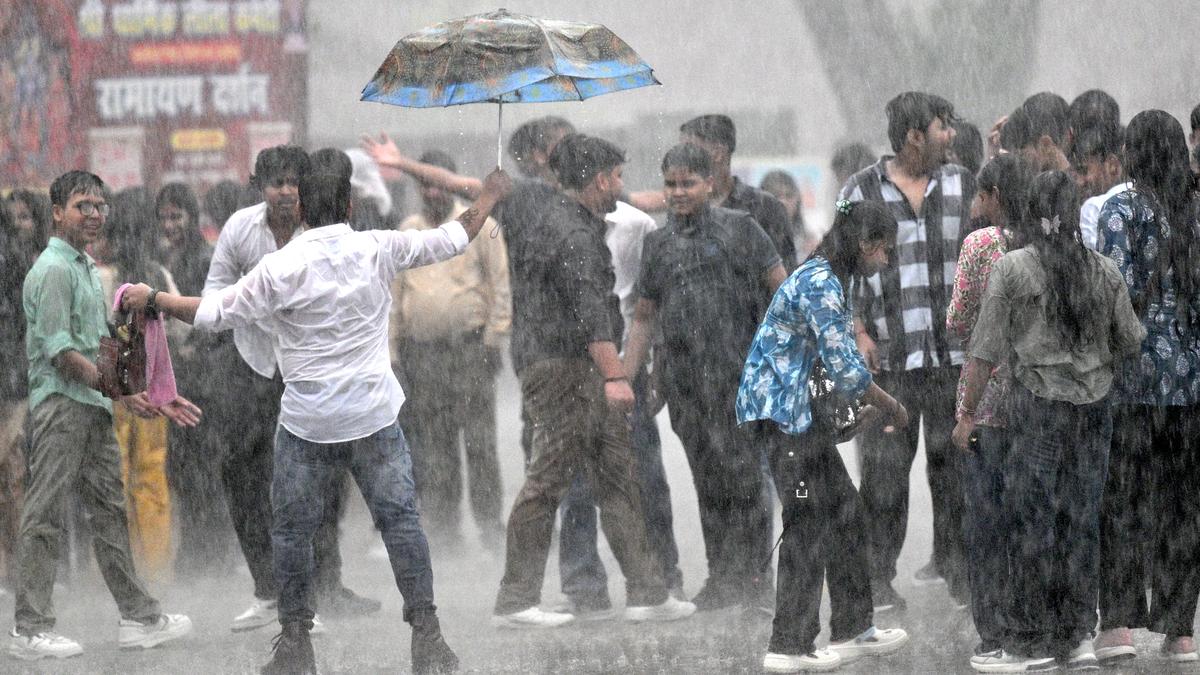Science
India Experiences 8% Surge in Monsoon Rainfall This Year

India received an impressive 8% more monsoon rain this year compared to the average, marking the fifth-highest rainfall since 2001 and the 38th highest since 1901, according to the India Meteorological Department (IMD). The rainfall data is specifically calculated from June 1 to September 30, which is the designated monsoon period in the country.
The southwest monsoon season has had a dual impact. While it significantly benefited agriculture by enhancing reservoir storage, it also caused extensive damage in various regions, particularly in northern India, leading to loss of life and property. Rainfall levels in northwest India, central India, and the southern peninsula exceeded seasonal averages by 27%, 15%, and 10%, respectively. In contrast, east and northeastern India recorded only 80% of their typical rainfall for the season.
Rainfall over northwest India reached 74.79 cm, the highest since 2001 and the sixth highest since 1901. In comparison, east and northeastern India saw just 108.9 cm, the second lowest recorded since 1901. The IMD’s forecasts, initiated in April and updated throughout the monsoon season, consistently indicated that rainfall would be “above normal,” estimating at least 4% more than the long-term average of 87 cm. The total monsoon rainfall recorded this year was 93.7 cm.
Storms and Their Effects
The monsoon season was marked by exceptionally heavy rainfall in several regions, driven by storms originating from the Mediterranean region and influenced by the monsoon trough that typically impacts the Indian subcontinent during this time. Analyzing the rainfall distribution by month, June experienced a 9% increase compared to the average, while July and August saw 5% more rain each. September’s rainfall was notably 15% above normal levels.
The southwest monsoon made its initial advance over the South Andaman Sea and Nicobar Islands on May 13, 2025, nearly nine days ahead of the usual schedule. It reached Kerala on May 24, well before the typical onset date of June 1, and covered the entire country by June 29, earlier than the normal date of July 8.
During this season, the IMD recorded seven monsoon depressions or sub-cyclonic storms forming in the Arabian Sea and the Bay of Bengal. Of these, one developed into a deep depression. These storms tend to last an average of 69 days, exceeding the normal duration of 55 days, which contributed to the prolonged periods of heavy rainfall experienced across India.
Looking Ahead
As of September 30, 2025, the monsoon system had not completely withdrawn and is expected to persist for the coming weeks, although the IMD does not count this additional rain in its monsoon totals. For October, the IMD has predicted ‘above normal’ rainfall for most of the country, with exceptions noted for parts of north and northwest India.
Looking further into the future, a potential La Niña event is anticipated to form in the central equatorial Pacific Ocean. Historically, this phenomenon can lead to more intense winters, although M. Mohapatra, Director-General of the IMD, cautioned that this is not always guaranteed. A more detailed forecast for winter months, covering December, January, and February, will be released around November.
The impact of this year’s monsoon highlights the complex interplay between beneficial rainfall for agricultural sectors and the devastating effects of natural disasters, underscoring the ongoing challenges faced by communities across India.
-

 World5 months ago
World5 months agoSBI Announces QIP Floor Price at ₹811.05 Per Share
-

 Lifestyle5 months ago
Lifestyle5 months agoCept Unveils ₹3.1 Crore Urban Mobility Plan for Sustainable Growth
-

 Science4 months ago
Science4 months agoNew Blood Group Discovered in South Indian Woman at Rotary Centre
-

 World5 months ago
World5 months agoTorrential Rains Cause Flash Flooding in New York and New Jersey
-

 Top Stories5 months ago
Top Stories5 months agoKonkani Cultural Organisation to Host Pearl Jubilee in Abu Dhabi
-

 Sports4 months ago
Sports4 months agoBroad Advocates for Bowling Change Ahead of Final Test Against India
-

 Science5 months ago
Science5 months agoNothing Headphone 1 Review: A Bold Contender in Audio Design
-

 Top Stories5 months ago
Top Stories5 months agoAir India Crash Investigation Highlights Boeing Fuel Switch Concerns
-

 Business5 months ago
Business5 months agoIndian Stock Market Rebounds: Sensex and Nifty Rise After Four-Day Decline
-

 Sports4 months ago
Sports4 months agoCristian Totti Retires at 19: Pressure of Fame Takes Toll
-

 Politics5 months ago
Politics5 months agoAbandoned Doberman Finds New Home After Journey to Prague
-

 Top Stories5 months ago
Top Stories5 months agoPatna Bank Manager Abhishek Varun Found Dead in Well









